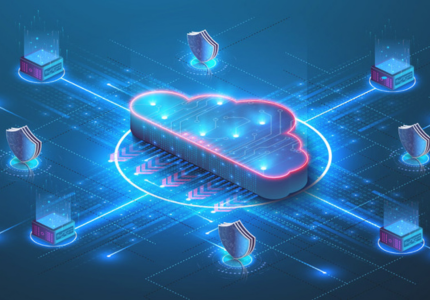You must maximise your IoT uptime and network resilience is how you do it. We’ve explored this important topic in depth in our recent blogs, covering the impact and causes of outages, the questions you should ask an IoT provider to get a reliable, scalable and secure service, and how you recover from an outage. In this blog, we outline seven advanced network and SIM capabilities you can opt for to boost resilience and security.
In brief: resilience and security tips for IoT uptime
-
There are seven advanced network and SIM capabilities you can choose to boost IoT resilience and security
-
They include options around SIM type, networking, authentication, monitoring, management and support
-
Wireless Logic’s free guide to maximising IoT uptime covers all options in depth, alongside additional tips to achieving high-availability IoT.
Your guide to maximising IoT uptime
Discover how to achieve high-availability IoT. Download the guide.
7 top tips for IoT resilience and security
A range of advanced network and SIM capabilities are available to enhance the resilience and security of your end-to-end IoT solution. Consider these seven options to help you maximise uptime, and also achieve compliance and differentiation in your market.
-
eSIM, iSIM and remote SIM provisioning
For years, removable SIM cards in mobile devices have enabled access to cellular networks. IoT versions provide the same basic connectivity, alongside remote management services. But there is another way. It’s time to look again at (embedded) eSIM and (integrated) iSIM because the flexibility they bring boosts your IoT’s resilience:
-
Maximum coverage – access to multiple networks per country
-
Ability to switch – download and switch SIM profiles over-the-air (OTA) to access an alternative network in an outage
-
Compliance – permanent roaming restrictions make multinational IoT deployments more challenging. Through remote SIM provisioning, you can download local mobile network operator (MNO) profiles for devices deployed abroad.
-
Secure private networking
Secure private networking helps protect against data theft, ransomware, malware and man-in-the-middle attacks, all of which could result in downtime and reputational damage. Options include:
-
Private APNs – a private access point name (APN) enables IoT devices to use mobile network infrastructure to connect to enterprise networks without accessing the public internet
-
IPSec VPNs – a virtual private network (VPN) is essentially a secure tunnel that links two or more devices so they can access a shared system. In IoT systems, IPSec VPN secures connections between enterprise networks and mobile (virtual) network operators (MNO/MVNOs), encrypting and authenticating traffic travelling through the tunnel.

-
Device authentication and identity management
Only authorised devices must be able to communicate with your servers. If a cyberattack breaches defences and impersonates or spoofs your device, you may be forced to take your solution offline, disrupting operations, inconveniencing customers and incurring reparation costs. Maximise device authentication and identity management with:
-
Private IP addresses – combined with private APN and VPNs, these separate and secure device traffic from regular internet traffic
-
Standards-based, secure IoT SAFE infrastructure – IoT SAFE brings the certificate-based security of contactless payments to IoT devices.
-
High-availability core functions and interconnects
What kind of infrastructure does your IoT connectivity provider have? The answer has a big bearing on the resilience of your solution. Seek out a:
-
Dedicated IoT core network – Conexa from Wireless Logic is built specifically for the IoT. It maintains a continuous view of system health and a failover for all traffic in the event of service degradation. Traffic redirection to an active node is automatic if a new connection must be established. Mission-critical applications are structured as microservices, strategically positioned across multiple data centres
-
Network of distributed packet gateways – these provide localised and low latency data connections whilst dual-IP addresses mapped to redundant packet gateways with automatic failover protect service continuity in the event of an outage.

-
IoT management platform
IoT solutions must be managed at the device, connection, security and application level to detect any issues and prevent widespread loss of service. Options include:
-
Connectivity management – SIMPro from Wireless Logic monitors location, frequency and volume of consumption and can alert, throttle, block or quarantine connections that violate defined parameters
-
Device management – DevicePro from Wireless Logic monitors device health such as signal strength, battery levels and temperature and can perform OTA configuration and firmware updates
-
Application management – Kheiron from Wireless Logic provides digital twin and application data contextualisation and visualisation.
-
Anomaly and threat detection
Anomaly and threat detection (ATD) reduces the risk of undetected or unresolved cyberattacks that could cause operational disruption and reputational and financial damage. It also provides vital evidence of your monitoring strategy should you need to demonstrate this to regulators. ATD can include:
-
24/7 global support
You need localised and real-time support for your IoT solutions wherever they are deployed. Assess:

Wireless Logic can help you design your IoT for maximum resilience and security, speak to our experts and download the free guide.
Frequently Asked Questions
How can I boost the resilience and security of my IoT?
There are a range of advanced network and SIM capabilities that can help enhance the resilience and security of your end-to-end IoT solution. Consider eSIM, iSIM and remote SIM provisioning, secure private networking, device authentication and identity management, high-availability core functions and interconnects, an IoT management platform, anomaly and threat detection and 24/7 global support to help you maximise uptime, and also achieve compliance and differentiation in your market.
What should I look for from my IoT connectivity provider for resilience and security?
Your connectivity provider’s infrastructure has a big bearing on the resilience of your solution. Seek out a dedicated IoT core network like Conexa from Wireless Logic. Conexa is built specifically for the IoT. It maintains a continuous view of system health and a failover for all traffic in the event of service degradation. Traffic redirection to an active node is automatic if a new connection must be established. Mission-critical applications are structured as microservices, strategically positioned across multiple data centres.
Where can I get more information on maximising IoT uptime?
Wireless Logic’s free guide to maximising IoT uptime covers seven advanced network and SIM capabilities to boost IoT resilience and security, alongside additional tips to achieve high-availability IoT.







